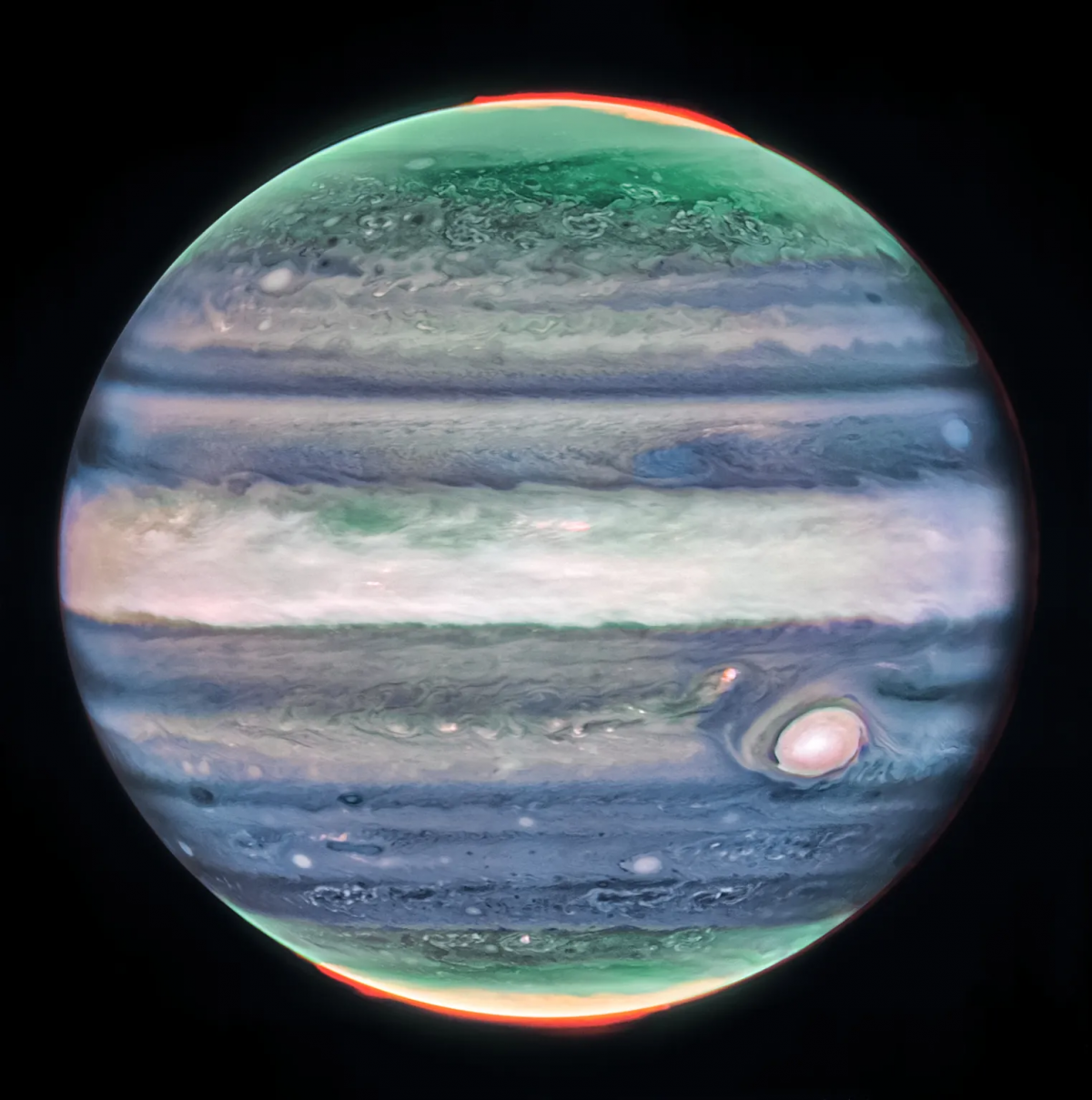In July 2022, Jupiter took center stage as one of the James Webb Space Telescope's inaugural subjects for infrared observations. The telescope delivered extraordinary images that exceeded astronomers' expectations, and it has recently unveiled a previously undiscovered feature in Jupiter's atmosphere.
With the Near-Infrared Camera (NIRCam) onboard Webb, researchers captured a sequence of Jupiter images, each taken 10 hours apart, using four distinct filters to monitor atmospheric changes. In the past year, the telescope, operating in the invisible infrared spectrum, has uncovered an array of celestial wonders, from expansive groups of young stars to surprising planet-like duos.
In Jupiter's lower stratosphere, approximately 25 miles (40 kilometers) above the cloud cover, astronomers made an astonishing find—a high-speed jet stream positioned over the equator. Spanning more than 3,000 miles (4,800 kilometers) and hurtling at 320 miles per hour (515 kilometers per hour, double the speed of Category 5 hurricane winds on Earth). This remarkable discovery emphasizes Webb's exceptional capabilities in unraveling the mysteries concealed within Jupiter's intricate atmosphere.
 Webb Telescope Unveils Jupiter's Dynamic Atmosphere with Remarkable Clarity
Webb Telescope Unveils Jupiter's Dynamic Atmosphere with Remarkable Clarity
A recent study, led by Ricardo Hueso, a physics lecturer at the University of the Basque Country in Bilbao, Spain, and published in the journal Nature Astronomy on October 19, sheds light on the dynamic interactions within Jupiter's turbulent atmosphere, made possible by Webb's sensitive capabilities. This newfound clarity of features, observed with Webb's superior technology, offers a fresh perspective on Jupiter's once-hazy and indistinct atmosphere.
Fresh Insights into Jupiter's Layered Atmosphere
While Jupiter and Earth may differ significantly in their gaseous composition, they share a common feature—an atmosphere with distinct layers. Previous missions and telescopes, including Juno, Cassini, Hubble, and various ground-based instruments, have delved into Jupiter's turbulent layers and observed its weather patterns. However, the James Webb Space Telescope (Webb) holds a unique position, enabling it to explore higher-altitude layers, offering novel perspectives on Jupiter's intricate atmosphere.
Webb's observations have already yielded new findings about Jupiter's rings, satellites, and atmosphere. By observing the high-altitude layers and combining these insights with Hubble's observations of the lower layers, scientists can develop a comprehensive understanding of Jupiter's atmosphere and its underlying processes.
Future observations using Webb may uncover more details about the jet stream, including variations in speed and altitude over time. These observations are expected to reveal additional surprises, shedding light on the dynamic and ever-evolving nature of Jupiter's atmosphere.